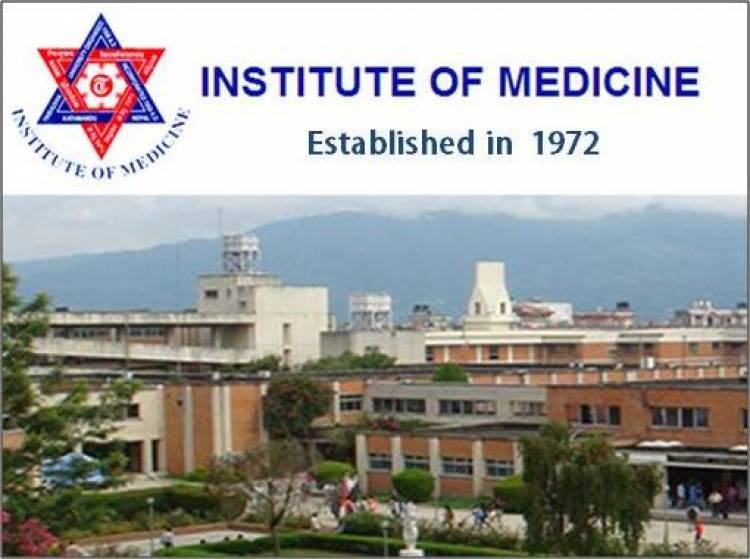Universities
Institute of Medicine (IOM)

Established in 1972 at Tribhuvan University, the Institute of Medicine (IoM) was given the duty of preparing healthcare professionals at all levels to meet Nepal's healthcare needs. The IoM established 12 campuses across the nation in the first ten years of its existence, with three of those being in Kathmandu and nine outside of the Kathmandu Valley.
IoM initially placed a strong emphasis on training middle-level healthcare professionals. ANM, CMA, the Proficiency Certificate Course in General Medicine, Pharmacy, Radiology, Physiotherapy, Nursing, Health Laboratory, and Traditional Medicine are among the programs that fulfill this objective.The institutional goals of IoM have continued to change. The mission of the IoM expanded into training tertiary-level health professionals. By 1977 it had at the graduate level two-year Bachelor programmes in Community Nursing, Paediatric Nursing and Adult Nursing.
Courses Offered
Bachelor's Level
- Bachelor in Dental Surgery (BDS)
- Bachelor of Audiology and Speech Language Pathology (BASLP)
- Bachelor of Medicine & Bachelor of Surgery (MBBS)
- Bachelor of Optometry (B. Optom)
- Bachelor of Perfusion Technology (Perfusion Tech)
- Bachelor of Pharmacy (B. Pharm)
- Bachelor of Science in Medical Imaging Technology (B.Sc.MIT)
- Bachelor of Science in Medical Laboratory Technology (BSc.MLT)
- Bachelor of Ayurvedic Medicine & Surgery (BAMS)
- Bachelor of Science in Nursing (B.Sc. Nursing)
- BNS (Adult Health Nursing)
Post - Graduate Level
- MD Anaesthesiology
- MD Biochemistry
- MD Clinical Pharmacology
- MD Clinical Physiology
- MD Dermatology, Venereology & Leprology
- MD Forensic Medicine
- MD General Practice
- MD Internal Medicine
- MD Microbiology
- MD Obstetrics.& Gynaecology
- MD Ophthalmology
- MD Pathology
- MD Pediatrics
- MD Psychiatry
- MD Radiodiagnosis
- MD Kayachikistsa
- MS Otorhinolaryngology (ENT)
- MS General Surgery
- MS Orthopaedics and Trauma Surgery
- MS Clinical Anatomy
- MDS Conservative Dentistry & Endodontics
- MDS Oral & Maxillofacial Surgery
- MDS Orthodontics and Dentofacial Orthopedics
- MDS Pedodontics
- MDS Periodontics & Implantology
- MDS Prosthodontics & Maxillofacial Prosthesis
- MSc Clinical Biochemistry
- MSc Clinical Microbiology
- MSc Medical Imaging Technology (MIT)
- MN (Adult Nursing)
- MN (Pediatric Nursing)
- MN (Psychiatric Nursing)
- MN (Women Health Development)
- MN (Community Health Nursing)
- Master of Public Health (MPH)
- Master of Public Health Nutrition (MPHN)
- Master of Health Promotion and Education (MHPE)
MCh Degree
- Magister of Chirurgiae (MCh) in Cardiothoracic and Vascular Surgery
- Magister of Chirurgiae (MCh) in Neurosurgery
- Magister of Chirurgiae (MCh) in Plastic Surgery
- Magister of Chirurgiae (MCh) in Surgical Gastroenterology
- Magister of Chirurgiae (MCh) in Urology
DM Degree
- Doctorate of Medicine (DM) in Cardiology
- Doctorate of Medicine (DM) in Critical Care Medicine
- Doctorate of Medicine (DM) in Emergency Medicine
- Doctorate of Medicine (DM) in Medical Gastroenterology
- Doctorate of Medicine (DM) in Nephrology
- Doctorate of Medicine (DM) in Neurology
M.Phil Degree
- M Phil Clinical Psychology
Ph.D. Degree
- PhD in Microbiology
- PhD in Nursing
- PhD in Public Health
The National Academy of Medicine plays a vital role in shaping the future of health and medicine. Its work has a significant impact on the lives of millions of people around the world.The Institute of Medicine (IOM), now known as the National Academy of Medicine (NAM), is a non-profit organization that provides independent, scientific advice to the government and the public on health issues. It was founded in 1970 as part of the National Academy of Sciences (NAS) and is one of the three academies that comprise the National Academies of Sciences, Engineering, and Medicine.